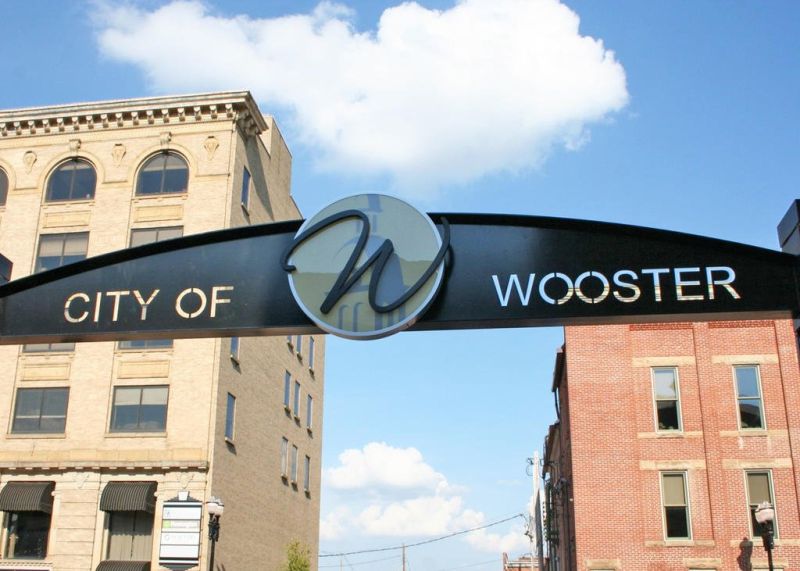Wooster updates its comprehensive plan
Big things are in the planning stages in Wooster. This isn’t news; city officials are constantly mapping things out with an eye toward the future.
The city’s official comprehensive plan, though, is a bit different. It’s a short- and long-range plan based on surveys and data. Wooster’s 2023 comprehensive plan offers a glimpse into what’s ahead.
The two-page brochure offers a simple version but covers a ton of ground. Joel Montgomery, Wooster director of administration and city manager, spent a bit of time breaking down what the city may be thinking about over the next decade or so.
“When we did our comprehensive plan 10 years ago — we do them about every 10 years — that was pretty much a start-from-scratch type of plan,” Montgomery said. “This was more of an update than a complete redo.
“Back in 2013-14, that’s when we established some focus areas around town and where we spent some efforts to either maintain or improve those areas downtown. This is more of an update, and there was a lot of initiative that happened in the last one.”
The new plan is broken into four areas: housing and population, growth and new development, parks and recreation, and connectivity and mobility.
The following is a breakdown of each of the plan’s four areas.
Housing and population
Data indicates more than three-quarters of Wooster’s households have no children. This is a sign of at least two possible factors: an aging population and nowhere for young families to start out.
Wooster’s housing shortage has become a major concern. It’s a point of stress for businesses looking to put roots here or to expand their workforces. Those things aren’t easy when housing choices are as limited as they’ve become.
The current inventory of homes has a median age of nearly 50.
“It’s not something we’ve been unaware of for the last several years,” Montgomery said. “It’s something that’s been a big push the last several years. On the subsidized housing front, the thing that was surprising, and you’re seeing this all around the country, is the lack of workers. You saw it all over the country, especially coming out of COVID. Some of the hope was the if you build more houses, you’re likely to attract more people. I don’t know if that always holds true.”
Cities don’t create jobs; businesses do. Likewise, as Montgomery said, cities also are not developers, so they are limited in what they can do about a situation such as the one facing Wooster.
What cities can do is try to facilitate things for developers. Things like tax incentives can draw businesses and people. Something like tax increment financing, which allows a local government and developers to work together, can speed up a cure for a housing issue.
“If we can do something to facilitate that, those are the things we can look at, tax incentives, et cetera,” Montgomery said. “We keep track of the number of houses that were built. Before the Great Recession, we had big developments coming in, and those were happening every year. Since the 2009-10-11 period, there were times we had single-digit houses being built.”
Growth and new development
Wooster has added about 100 people per year since the turn of the century. That seems like a modest amount, but it adds up to an increase of close to 10%. That’s more than 6% more growth than Ohio has seen over the same period.
Residents were surveyed about where new home developments should take place. Montgomery pointed to the Oak Hill area, where a TIF has been established between the city, the people and the schools.
“Using the TIF and redirecting some of those property tax dollars, we’re able to pay for some of those improvements that will benefit people beyond just in those developments,” Montgomery said. “That helped facilitate the development that’s going on right now.”
There are approximately 100 acres still available in the city for higher-density development.
Parks and recreation
Wooster is home to more than 700 acres of parkland. This equates to 25.9 acres per 1,000 residents, far more than the national median of 10.6 acres.
“We’re seeing an interest in expanding the community center downtown,” Montgomery said. “We’ve looked at the Christmas Run pool and getting it improved. It’s getting a little run-down. That wasn’t quite on the radar 10 years ago.”
Fittingly, the community center is nearly 50 years old, making it like the median home in town. Residents were questioned as to whether that should be replaced or renovated. They also were asked how the center should be used in the future.
Once those answers are studied, some decisions will be made in the area of parks and recreation.
Connectivity, mobility
Montgomery said the city has made great strides over the past 10 years in actual roadways. During surveys a decade ago, that was a chief concern. That focus may be shifting a bit toward off-road entities.
Wooster boasts 7 miles of painted bike lanes with a 1-mile trail being constructed and 1.3 miles being designed.
“Bike paths is always a big issue,” Montgomery said. “We’re seeing those being used quite a bit. We’re seeing continued interest in installing those bike paths. We’re keeping the parks up to date, and bike paths may be the next step with that.”

